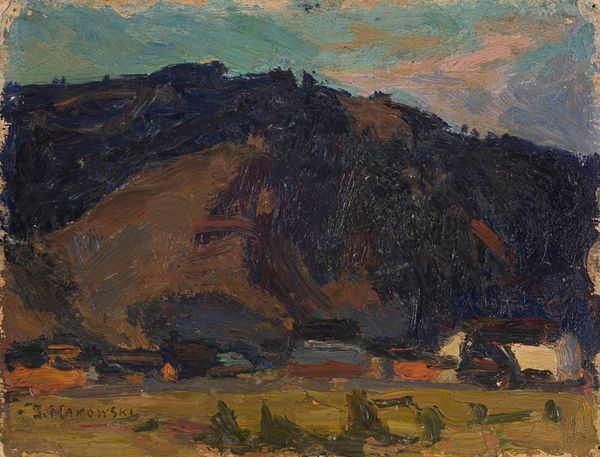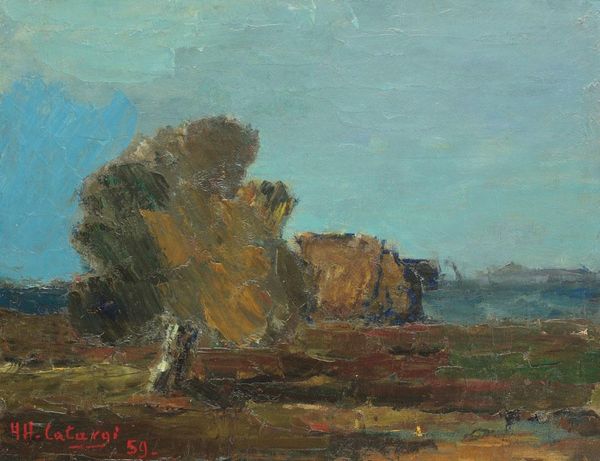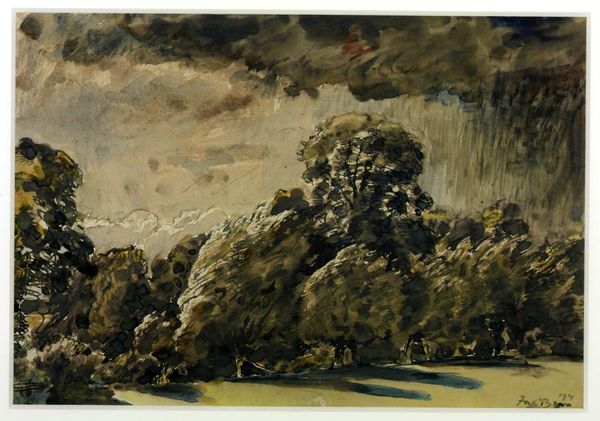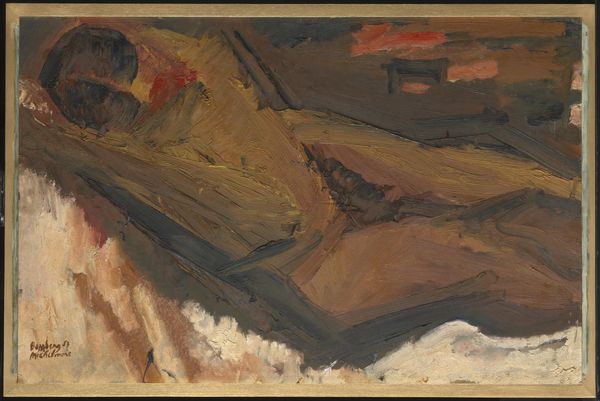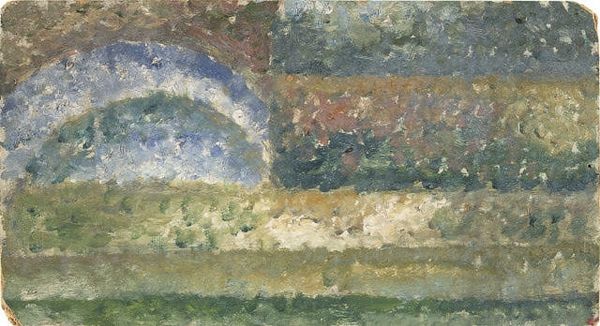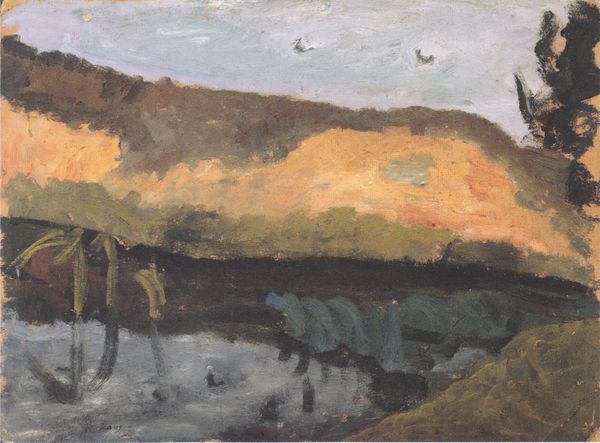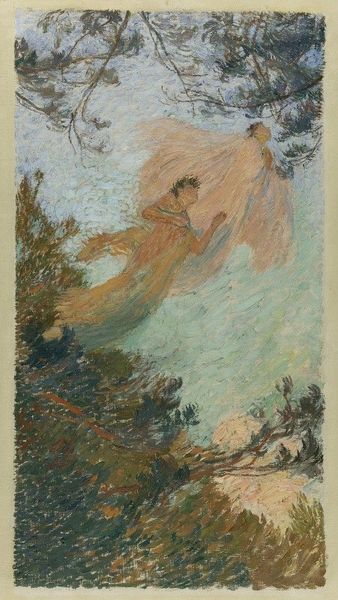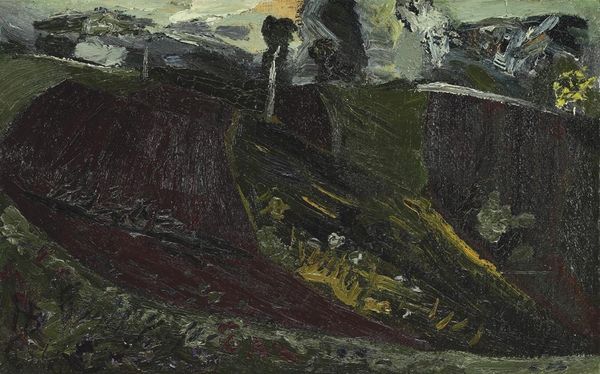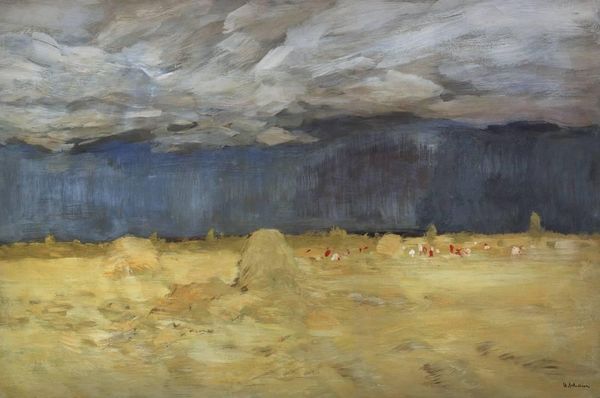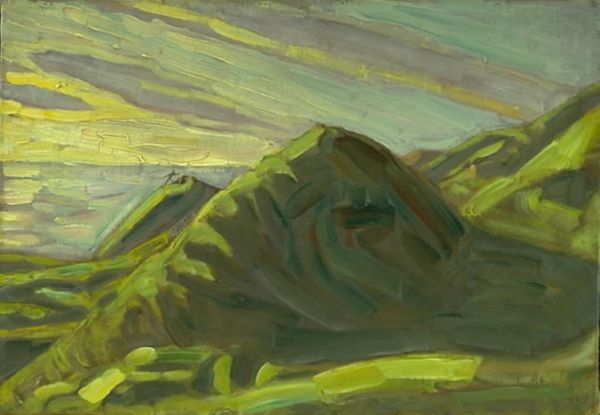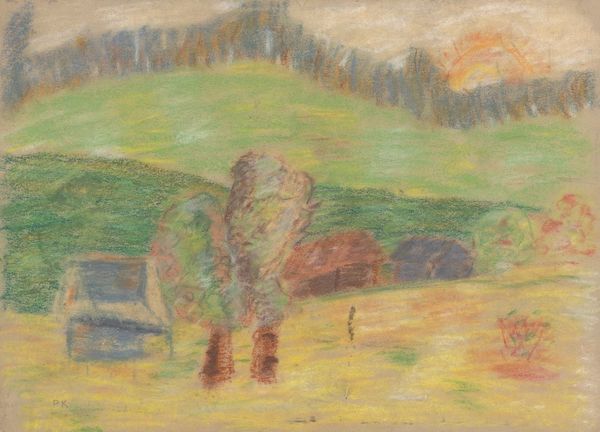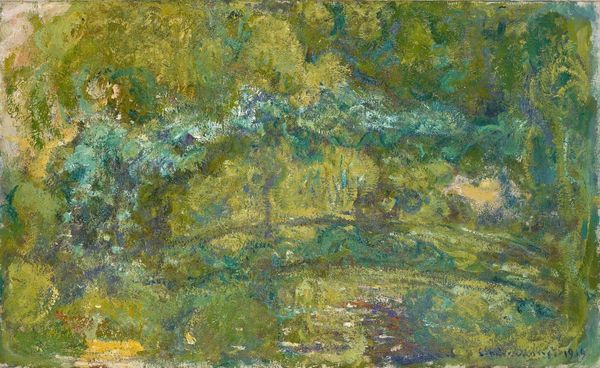
Copyright: Public domain US
Editor: Here we have Henri Matisse’s "The Olive," painted in 1898. It appears to be an oil painting, and the thick brushstrokes give it a tactile quality. What strikes me most is how the solid, almost blocky form of the tree contrasts with the swirling sky. What do you see in this piece? Curator: I see a painting deeply concerned with the fundamental elements of visual expression. Consider how Matisse uses the materiality of the oil paint itself. The impasto technique, the visible ridges and textures, transform the surface into more than just a representation. The painting becomes an object in its own right. Editor: So you're focusing more on the paint itself rather than, say, the symbolism of the olive tree? Curator: Precisely. Though some may look for symbolic meaning in the olive tree itself, it is more rewarding to consider the arrangement of forms. Observe how the verticality of the tree trunk interacts with the horizontality of the landscape. What affect does this structural dichotomy create? Editor: It makes the tree feel very grounded, but also pushes your eye upward towards the sky. I hadn’t thought of it that way. So, even in a landscape, the composition is the key to understanding. Curator: Exactly. By carefully analyzing the visual relationships within the work—color, line, texture, shape—we can move towards a deeper engagement with its meaning. This structured analysis brings out qualities one might initially overlook. Editor: I can see that. Looking at it again, I'm starting to appreciate how much the texture adds to the painting. Thanks for pointing out that formalist perspective. Curator: And I have valued revisiting the way form enables perspective; every artwork offers something new upon close examination.
Comments
No comments
Be the first to comment and join the conversation on the ultimate creative platform.

